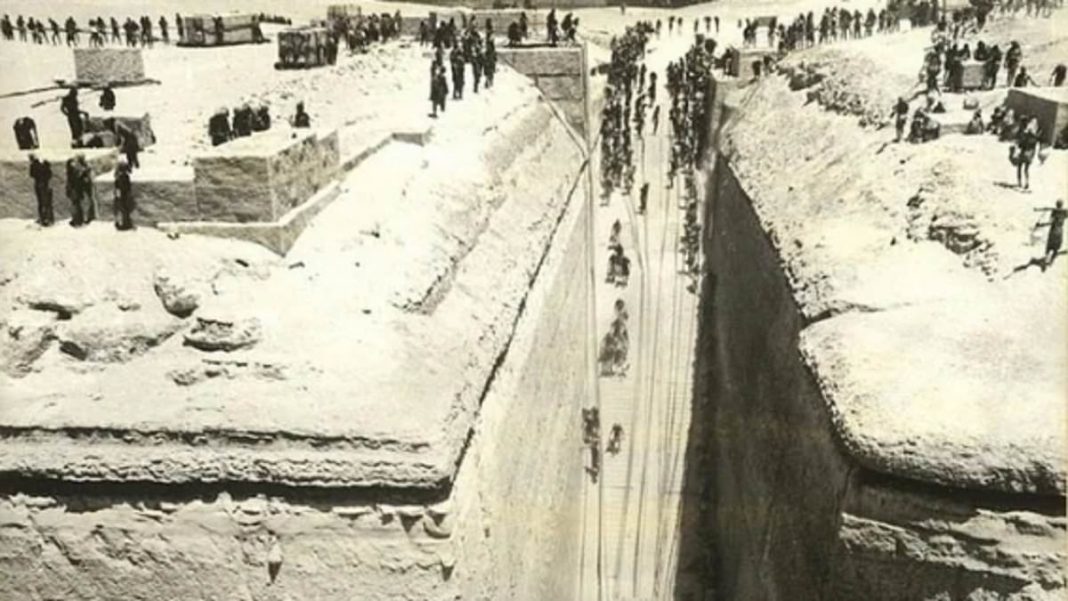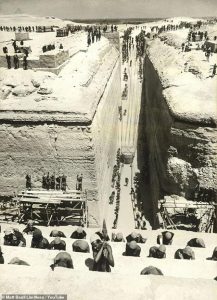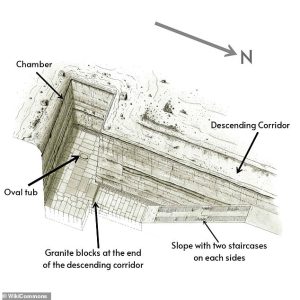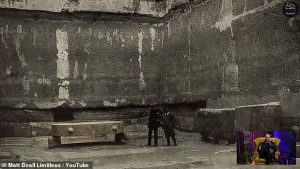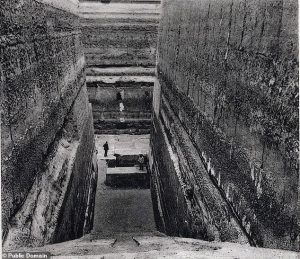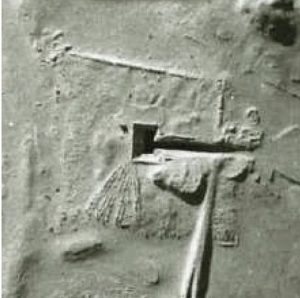Key Takeaways
- A mysterious, military-sealed site near the Giza Pyramids, nicknamed Egypt’s Area 51, features a 100-foot-deep T-shaped pit.
- An oval vat sealed with a granite lid was found at its center, once containing an unknown substance.
- Ancient graffiti includes the word ‘Seba,’ interpreted by some as a ‘gateway to the stars.’
Just three miles from the Giza Pyramids lies Zawyet El Aryan, a site sealed by the Egyptian military since the 1960s and nicknamed ‘Egypt’s Area 51.’ Archaeologist Alessandro Barsanti first uncovered its colossal T-shaped pit in the early 1900s.
The 100-foot-deep structure, carved from solid limestone and lined with granite, contains a central oval vat sealed with a granite lid. Barsanti reported traces of an unknown substance inside, now lost.
The ‘Gateway to the Stars’ Mystery
The site’s true purpose remains debated. Mainstream Egyptologists believe it was an unfinished pyramid from the 3rd or 4th Dynasty. However, mysterious graffiti found on the walls includes the word ‘Seba.’
Independent researcher Derek Olsen, speaking on the Matt Beall Limitless podcast, suggested this translates to ‘gateway to the stars,’ potentially indicating a vessel for cosmic travel. Mainstream scholars propose it might simply be a builder’s name.
Engineering Marvels and Military Secrecy
The construction itself is staggering. The T-shaped structure is carved directly into bedrock, with unfinished smooth limestone walls. Its floor, however, is finished with massive granite blocks—each 15 feet long, 8 feet thick, and weighing up to 18,000 pounds.
The central granite vat measures 10 feet long, 7 feet wide, and 5 feet deep. Its purpose is completely unknown. The Egyptian military’s takeover in the 1960s halted all modern research, leaving Barsanti’s original photos as the only detailed record.
Historical Connections and Ongoing Debate
Archaeologists claimed to find a damaged tablet bearing the name of Fourth Dynasty ruler King Djedefre, potentially linking the site to his reign. However, the tablet’s authenticity is debated.
Olsen noted similarities to other ancient Egyptian structures featuring granite boxes, like the Great Pyramid and the Serapeum. ‘We are seeing a theme of this huge granite floor and a lid-like structure,’ he observed. The site’s full story remains locked away, a modern mystery rooted in ancient engineering.


